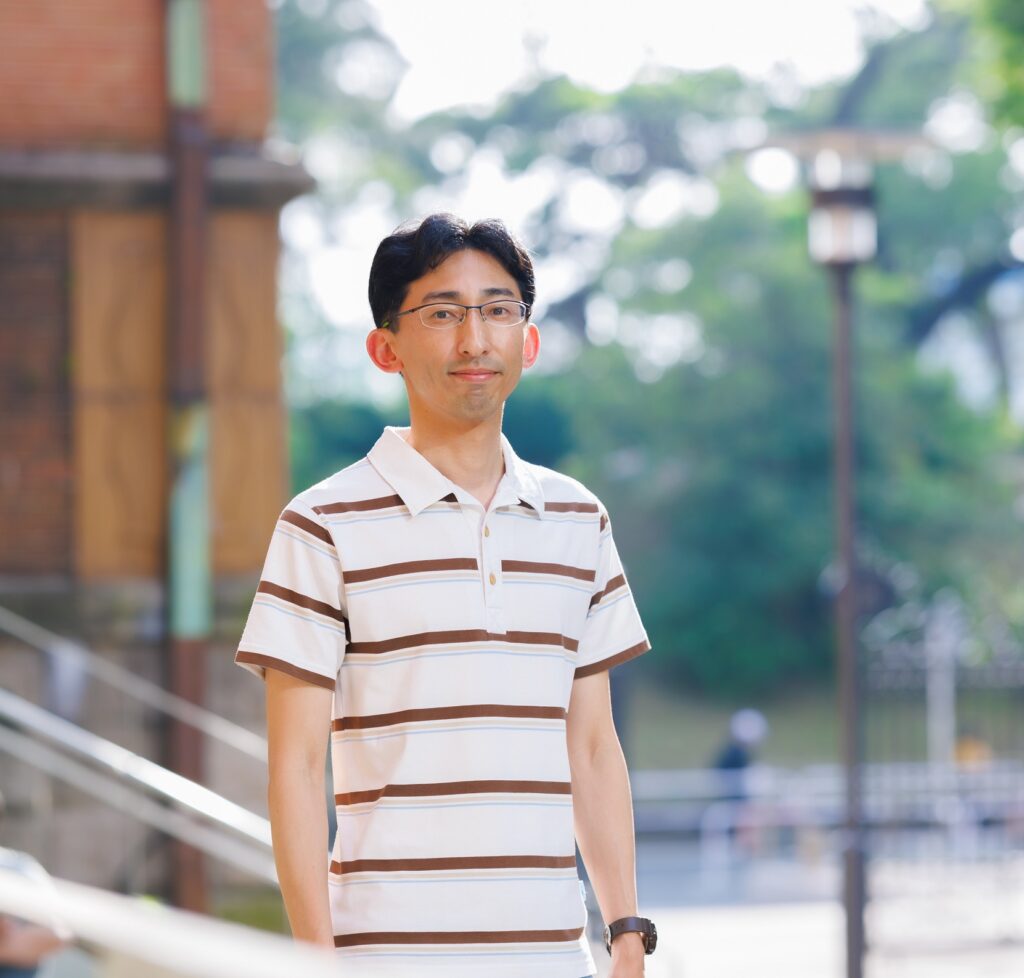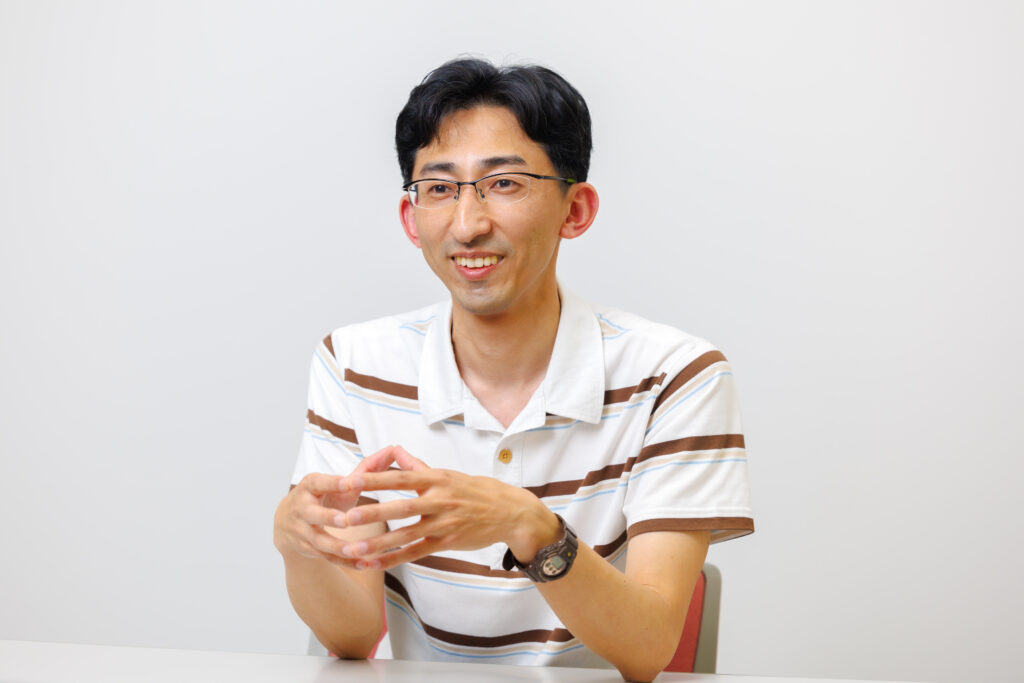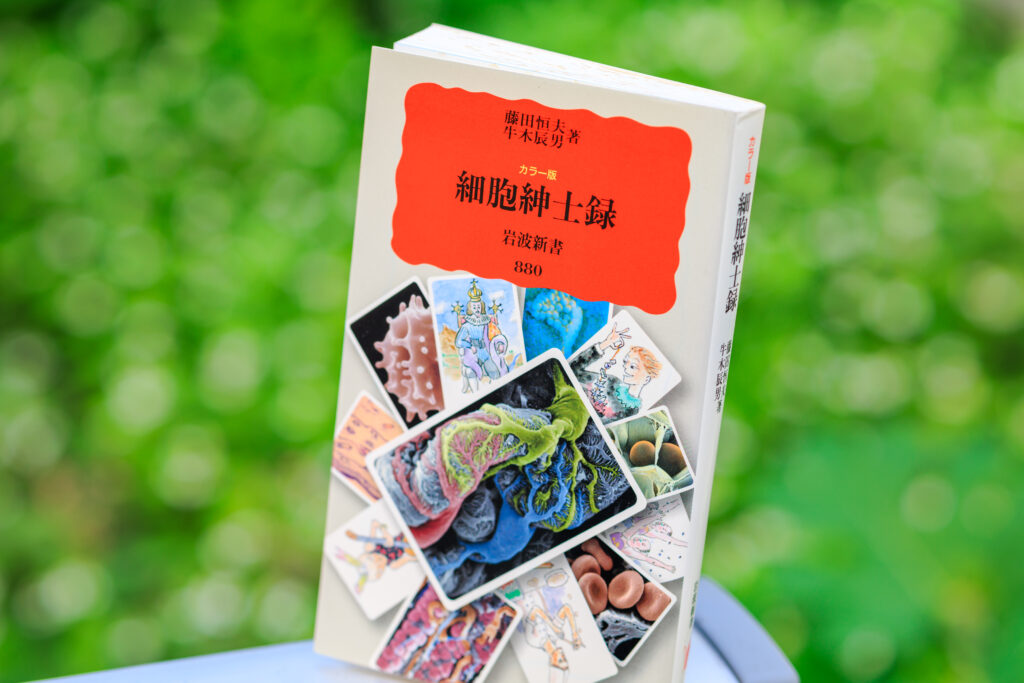
Through the study of Drosophila, a type of small fruit fly, Associate Professor Tetsuo Yasugi of the Faculty of Science and Technology seeks to uncover the mechanisms by which organisms develop. In recent years, he has actively integrated mathematical approaches, believing it to be a key tool for addressing current challenges in biology research.
The bodies of multicellular organisms are formed when a single fertilized egg proliferates through a process of repeated cell division, and these cells differentiate and acquire various functions. I am particularly interested in the nervous system, and the way in which neural progenitor cells differentiate into a diverse array of neural cells.
What molecular mechanisms govern the proliferation and differentiation of neural progenitor cells? In order to shed light on this problem, our research lab conducts experiments using Drosophila, a type of small fruit fly.
While these fruit flies have an extremely limited number of neural cells compared to humans, we share many similarities with them in the molecular mechanisms that control our cell proliferation and differentiation.
Fruit flies are also a good subject for experimentation since we can modify their genes easily. The knowledge we gain through our research will likely have future applications for research on organisms like mice and even humans.
Expressing biological phenomena in the form of mathematical formulae

In the nervous system of fruit flies, we have ascertained through our experiments that differentiation from epithelial cells to neural stem cells occurs with a directionality akin to the propagation of waves. We have termed this phenomenon, “proneural wave.”
Collaborating with colleagues in the field of mathematical sciences, we have built a mathematical model that allows us to describe this phenomenon using mathematical formulae—and we have succeeded in demonstrating the accuracy of this model by comparing it to our experiments on actual fruit flies.
This mathematical approach confers significant advantages. In biological experiments, it was previously difficult to create certain conditions, such as halving the functions of a certain gene. A gene would either function, or its function would be suppressed—it was binary.
However, using this mathematical model, we can set the parameters of gene functions more freely. And this can give rise to unexpected simulation results.
Discovering new roles for genes
Our simulations of the “proneural wave” mathematical model indicated that, if we could lower the functions of certain genes, then differentiation would occur randomly. In the case of fruit flies, we are able to partially suppress the function of its genes; when we experimented on actual flies—following the simulation—we were able to verify the same phenomenon.
These results enabled us to conclude a new fact: that a number of genes work together to control the “proneural wave.” If we can effectively use hypotheses derived from mathematical models, it will enable us to accelerate our research with unprecedented speed.
Of course, mathematical models require a base of experimental data. On an almost daily basis, therefore, I have peered through the lens of a microscope and stared at thousands—even tens of thousands—of fruit flies. Some people feel this work to be a grind; others, like me, find joy in it, viewing it as a sort of treasure hunt.
Steadily carrying out experiment after experiment, and on occasion collaborating with researchers from other fields—this is the style in which I wish to further my research.
The book I recommend
“Kara-ban Saibo Shinshi-roku”(A directory of cells, color edition)
by Tsuneo Fujita and Tatsuo Ushiki, Iwanami Shoten

With a unique tagline of “Not the thousand-armed Kannon but a brain neuron” and filled with beautiful color illustrations, this book describes the roles of diverse cells. The content can be difficult in places; however, if you have an interest in biology, I encourage you to give it a try.
-
Tetsuo Yasugi
- Associate Professor
Department of Materials and Life Sciences
Faculty of Science and Technology
- Associate Professor
-
Associate Professor Tetsuo Yasugi graduated from the Faculty of Science, The University of Tokyo, and received his Ph.D. in science from the university’s Graduate School of Science. After working as an assistant professor at the Institute of Molecular and Cellular Biosciences, The University of Tokyo, a researcher at the Institute of Molecular Biotechnology in Austria, a researcher at RIKEN, and as an assistant professor and then associate professor at the Institute for Frontier Science Initiative, Kanazawa University, Yasugi was appointed to his current position in 2023.
- Department of Materials and Life Sciences
Interviewed: May 2023